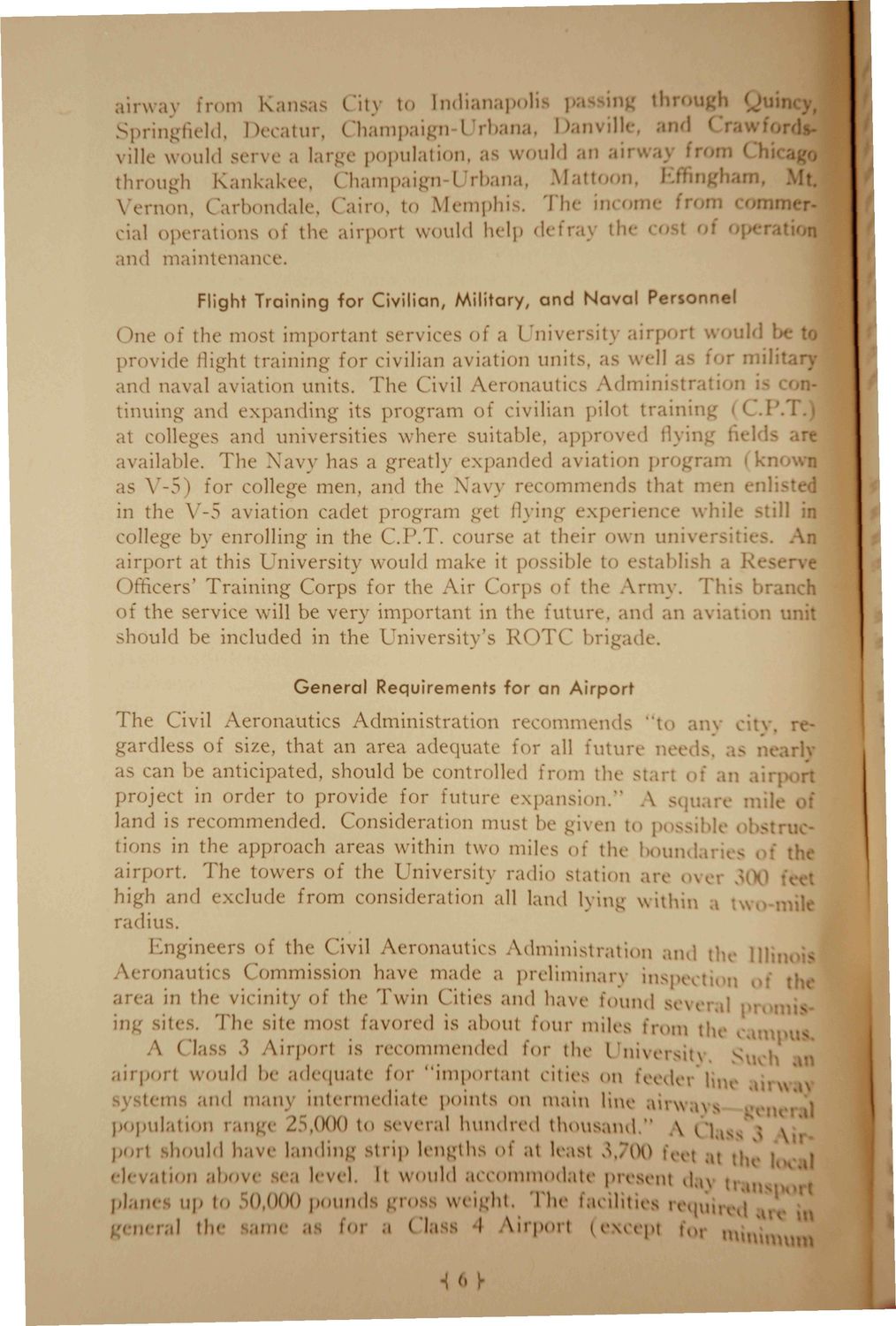Caption: Dedication - Justification and Planning for Willard Airport (1942)
This is a reduced-resolution page image for fast online browsing.

EXTRACTED TEXT FROM PAGE:
irwav from Kansas City to Indiana] i ing th Springfield, Decatur, Champaign-Urbana, I nvill< I ' rdi ville v uld serve a larg< population, as \\ uld an irv n I »ic through Kankakee-. Champaign-Urban; Matt< n. E Vernon, ( irbondale, ( a i r e to Memphis. The in m fi er cial operations of the airport would help dc!*ra\ lh md maintenance. Flight Training for Civilian, Military, a n d N a v a l Personnel perati :i ( )ne of the most important servi< s of a University air] * v. uld ! provide flight training for civilian aviation units. ;i s well r lilil md naval aviation units. The Civil Aeronautic.Iministr tinuing and expanding its program of civilian pilot training (( .1 t colleges and universities where suitable, approve I fl) tvailable. The Navy lias a greatly expanded aviation pr< am (1 n is V-5) for college men. and the Navy recommends that men enlisted in the V-5 aviation cadet program get flying experience whil :ill in college by enrolling in the C.P.T. course at their own univei An tirport at this University would make it possible to lish a Reserve Officers' Training Corps for the Air Corps of the Army. This ranch of the service will be very important in the future, and an tion unit should be included in the University's R O T C brigade. General Requirements f o r an A i r p o r t The Civil Aeronautics Administration recommends "to i tv. n gardless of size, that an area adequate for all future net s -carl as can be anticipated, should be controlled from the stan in project in order to provide for future expansion." A square mile land is recommended. Consideration must be given to possible - Stm tions in the approach areas within two miles of the bom 5 of I airport. The towers of the University radio station are high and exclude from consideration all land lying within mi radius. Engineers of the Civil Aeronautics Administration an i tin [Din s Aeronautics Commission have made a prcliminan inspect area in the vicinity of the Twin Cities and have t und sew ing sites. The site most favored is about four miles from f A ("lass /$ Airport is n oinmended for the [Jnivi 1 • • • • : > airporl would be adequate for "important cities on feed* jtems and many intermediate points on main hue airwa> w population laniM- 25,000 1 » several hundred thousand " A i l , < \ poii hould have landing strip lengths <>' at least 3,700 i i. • al Ltion above B i level. It would .1 oniniodate present d i\ • < plants up to 50,0()() pounds groi weight, The facilities t final Oie mi afl fd a I la ^ <> Hist I I ^ \ n poi t pi f0, n
|